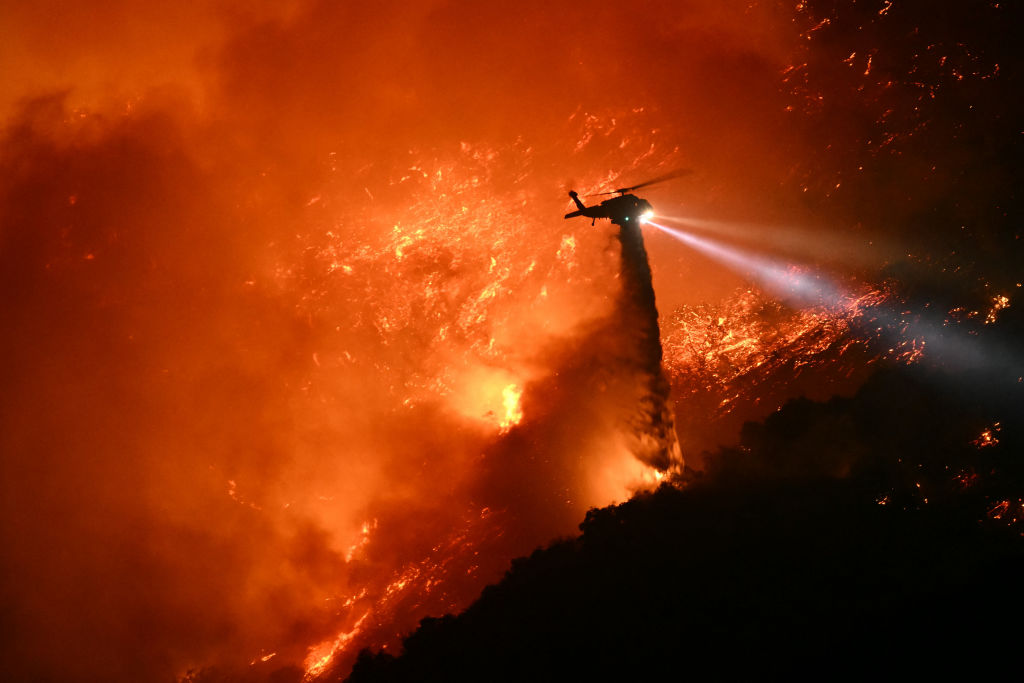The recent Los Angeles wildfires that have ravaged through the Pacific Palisades, Altadena hills and the surrounding areas have been devastating, and spectators across the country have watched as firefighters and first responders courageously battle the flames. . The fires, which started the morning of January 7, have diminished thousands of homes, businesses and historic landmarks, causing thousands of residents to evacuate— at least 24 people have lost their lives to the natural disaster, as of publication. The ongoing firestorm is now said to be the worst natural disaster in U.S. history by cost, with damage and economic costs estimated to be between $135 billion and $150 billion, according to AccuWeather. And while the exact cause of the L.A. fires is still being determined and investigated, many scientists have little to no doubt that climate change was a contributing factor. Below, we explain how climate change helped fuel the disastrous L.A. fires, how climate change can impact you and what needs to be done.
Did climate change cause the L.A. fires?
The Pacific Palisades fire, as well as the Eaton fire in the Altadena area, are still burning as of publication. While the causes of these devastating disasters are currently being investigated, researchers are already starting to point to potential factors. Extremely dry vegetation, “climate whiplash,” human activity and more are leading the list of potential risk factors plaguing the area that went up in flames—a definitive causation will be released in due time.
We do know that the fires spread rapidly—and thus were incredibly difficult to battle—due to heavy, strong, “hurricane-force” Santa Ana winds that picked up on the evening of January 7. These winds, which affect coastal Southern California and usually occur from October to March, “are typically of greatest concern from a wildfire perspective in the first month or two of the October to March period, before the arrival of the first significant rains, typically in November,” reports University of California, Los Angeles (UCLA). But rain didn’t come this past November—or anytime after that, likely contributing to the fast causation and spread of the fires.
Southern California has experienced an extremely dry season and intense drought with little to no rainfall over the past eight months. However, prior to 2024, California had extremely wet seasons in 2022 and 2023 with heavy rainfall. With that said, what does this “climate whiplash” mean? During the wet seasons, Southern California saw an increase in the amount of crops and vegetation, a.k.a. “fuels,” that spread across the hillsides; this high amount of vegetation essentially “dried out” thanks to the long-lasting drought, making the area more susceptible to wildfires.
So while, as aforementioned above, much more research, investigating and analysis is needed to determine what exactly caused the L.A. wildfires, it’s very likely climate change played a significant role in the severity of the fires.

How you could be affected by climate change and what you can do
Climate change does not discriminate. You don’t have to be in a fire-hazard area (such as Southern California) or a hurricane-heavy hotspot (like Florida) to experience the effects of climate change. Climate change is here, and can impact everything from our health and likelihood of disease to our water supply and food supply. “It’s only a matter of time before natural disasters fueled by climate change are more common for all of us. It’s not a matter of if, it’s a matter of when,” Kate Fugett, Co-Chair of the American Institute for Conservation’s Sustainability Committee tells us.
However, there is hope. There are solutions to the problem, but action needs to be taken now. “There are lots of little things people can do, but we need big action. We have the solutions to solve this problem. We’re just not utilizing them and incorporating them into the systems that exist in our society,” affirms Fugett. “The most important thing you can do is vote for candidates who believe in climate change and are going to pass laws and policies that incorporate these solutions.”
No matter where you live or who you are, it will only help you to care about climate change. Not only to help the future of our planet, but also to save us from hundreds of billions of dollars that can accumulate from natural disasters. “Natural disasters fueled by climate change cost a huge amount of money. It is both morally and economically smart to take action to minimize our impact,” says Fugett.
Aside from voting for policy makers who want to make positive change for our earth, small things you can do to help fight climate change include limiting your energy use, choosing energy-efficient appliances, switching to LED lightbulbs, carpooling, recycling and limiting your use of Artificial Intelligence, or “AI.” In fact, going off the latter point, data centers, which house the server infrastructure needed for AI, “account for 2.5 percent to 3.7 percent of global greenhouse gas emissions, exceeding even those of the aviation industry,” says Columbia University’s Climate School. If we all partook in these changes, we’d each be helping our planet one step at a time.




